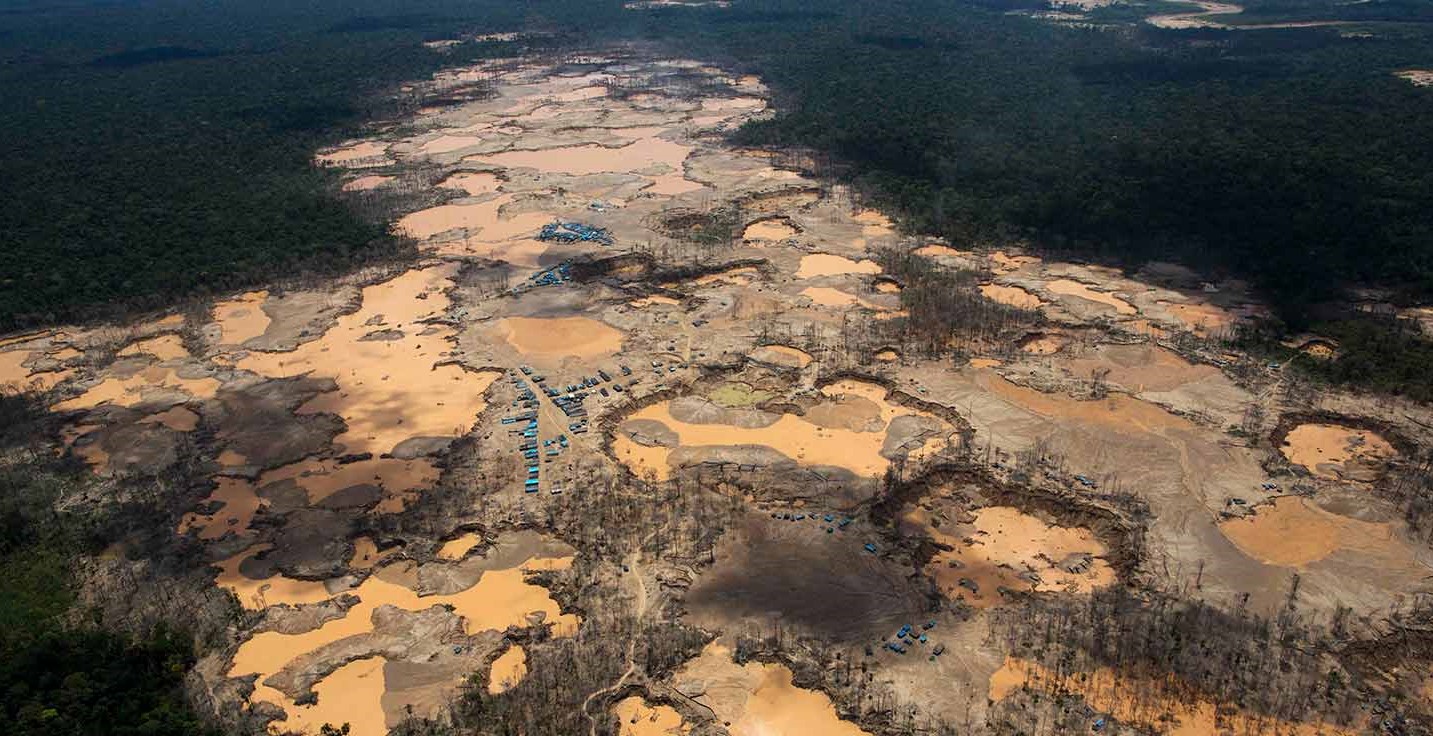The novel coronavirus SARS-COV-2 has undoubtedly had a disastrous effect on many aspects of modern life, from devastating already-crumbling economies to increasing levels of mental health conditions and suicide rates. However, one of the less-obvious impacts of the pandemic is the effect on the environment – specifically the promotion of the gold mining trade in South America, leading to destruction of indigenous lands.
Small scale gold mining in Amazonian regions began as early as the 16th century, however, an increase in the global demand for gold and the discovery of gold reserves along the Brazil-Venezuelan border in the mid 1970s sparked a “gold rush” in the area. People from poorer areas would (and still do) flock to states such as Pará in the north of Brazil, where they can make thousands of dollars a month mining the land.
Nowadays, miners use a combination of large and small scale mining as well as river and land dredging techniques (river dredging involves sucking the ground underneath the river into pipes which filter out the gold and land dredging is where a hole is drilled into the ground and a high pressure water source is used to bring up the gold). These techniques can have disastrous effects on the landscape. According to a study by Brazil’s National Institute for Space Research (INPE – Instituto Nacional de Pesquisas Espaciais), deforestation rates in February 2020 were already double what they were in the same period in 2019 (an increase of 108%).

Another study published in October 2020 which exposes, for the first time, the full effect of large-scale and illegal mining operations in Indigenous Amazonian areas, shows that both legal and illegal mining covers 20% of Indigenous lands. This is polluting more than 30 Amazonian rivers and destroying 450,000 km2 of land.
Even more worrying is a recent study published by researchers at the University of Leeds in the Journal of Applied Ecology which shows that forest recovery rates on abandoned sites are incredibly low. At some sites, tree regeneration was not observed even three or four years later. This is because mining not only strips the soil of vital nutrients required by plants for growth but also contaminates it with toxic pollutants.
The rainforest has long been a safety net for many poor Brazilians. During times of particular hardship (such as during the “economic downturn” in the 1980s), many turn to mining Amazonian land as a source of income to support their families. The Covid-19 pandemic has been no different. Already, the pandemic has hit communities hard; driving unemployment levels higher in a country where 44% of households are on monthly emergency government handouts. With this scheme ending in December, 15 million people on top of the surging numbers losing their jobs due to the pandemic could find themselves in poverty. People are subsequently looking to other means to support their families. With the price of gold reaching a record high in August 2020 (£1598.66 per ounce), mining provides many with the sort of stability needed to live in these trying times and so, in the face of protecting and conserving the forest, instead many are forced to exploit it in the hopes of providing for their loved ones.
Though Covid-19 has unfortunately meant the number of people turning to the mining industry for income has increased, this is further enabled by the government of Jair Bolsonaro who was sworn into Brazilian presidency in January 2019. The son of a miner himself, Bolsonaro sympathises with the miners’ plight and supports their work by inviting them into meetings, criticising IBAMA (the Brazilian Institute of the Environment and Renewable Natural Resources) for destroying mining equipment, and going so far to defend them not only from environmentalists and non-government bodies within Brazil, but also from foreign powers.
Bolsonaro even went as far as to introduce a bill in February 2020 to allow mining on indigenous lands – an activity currently blocked by the head of the lower House of Deputies and opposed by several environmentalists and most leaders of the 300 tribes in Brazil.
Under his administration, applications to mine on indigenous lands have increased by 91% – including in areas which are protected by laws. Mining of these lands would not only be detrimental to the environment, but would also lead to the “physical disappearance” of many Amazonian people who inhabit these areas. Despite this, Bolsonaro believes that indigenous people take up too much land (they currently occupy only 13% of land in Brazil) and regularly unleashes criticisms onto environmental agencies. He even refuses to believe his own government’s data showing worrying increase in the levels of deforestation in Amazonian regions.
The future of the Amazon rainforest is threatened by multiple factors. Firstly, the lax attitude of the government intertwined with support of the mining industry. Second, forest fires in 2020 reached the highest levels for 10 years. On top of this, the pandemic is only driving unemployment levels higher, forcing more people to turn to mining for work and pay which creates more damage to Amazonian territories. It is uncertain what the future holds, but one thing for certain is that the so-called “lungs of the earth” is in danger of total collapse and something needs to be done.
By Olivia Kolasinski
Header image: The Nation

